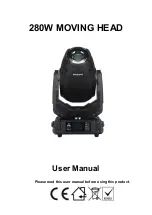
OMNI 4000/7000 Operations and Maintenance Guide
– Rev F
2-1
OMNI 4000/7000 Overview
2. OMNI 4000/7000 Overview
The OMNI 4000/7000 flow computer is supplied with firmware and Windows PC configuration
software that allow a single flow computer to perform a wide range of flow measurement tasks
simultaneously, including:
•
Multiple Meter Run totalizing, batching, proving and data archiving.
•
Flow and control.
•
Communications protocols (selectable) to directly interface with Distributed Control Systems
(DCSs), Programmable Logic Controllers (PLCs) and Supervisory Control and Data
Acquisition (SCADA) host systems.
The flow computer Modbus database numbers thousands of data points and provides tight
communications coupling between the SCADA and the metering system.
2.1
Hardware
Front Panel
The front panel of the flow computer features an active alarm Light-emitting Diode (LED), a color
graphics display and a 25-key keypad for navigation of the menu system, data selection and data
entry. The front panel provides the capability to configure system parameters, view flow data,
perform I/O calibrations and print reports.
Back Panel
All signal I/O terminals and power connector/terminals are located on the back panel. The
OMNI 4000 has four I/O terminal blocks and the OMNI 7000 has ten I/O terminal blocks.
All flow measurement inputs are first received at the back panel and then through plug-in I/O
combination (combo) modules. Four types of combo modules are available: A, B, E and E/D.
Flow computers may be used to interface with any approved compatible 4-20 mA or 1-5 V
temperature, pressure and differential pressure transmitter from the back panel. They can also
receive direct inputs from 4-wire, 100-ohm Resistance Temperature Detectors (RTDs), which
conform to either Deutsches Institut für Normung (DIN) IEC 751 or American curves.
Pulse inputs from any approved turbine, positive displacement, or Coriolis mass flow meter may
be used.
Chassis
The chassis houses the I/O modules, the motherboard, the CPU and the power supply.
CPU Module
All custody transfer measurement programs and configurations can be stored in non-volatile
memory for up to 10 years without power. This method prevents damage caused by electrical
noise or tampering with the integrity of calculation specifications, and it does not rely on a battery.
















































